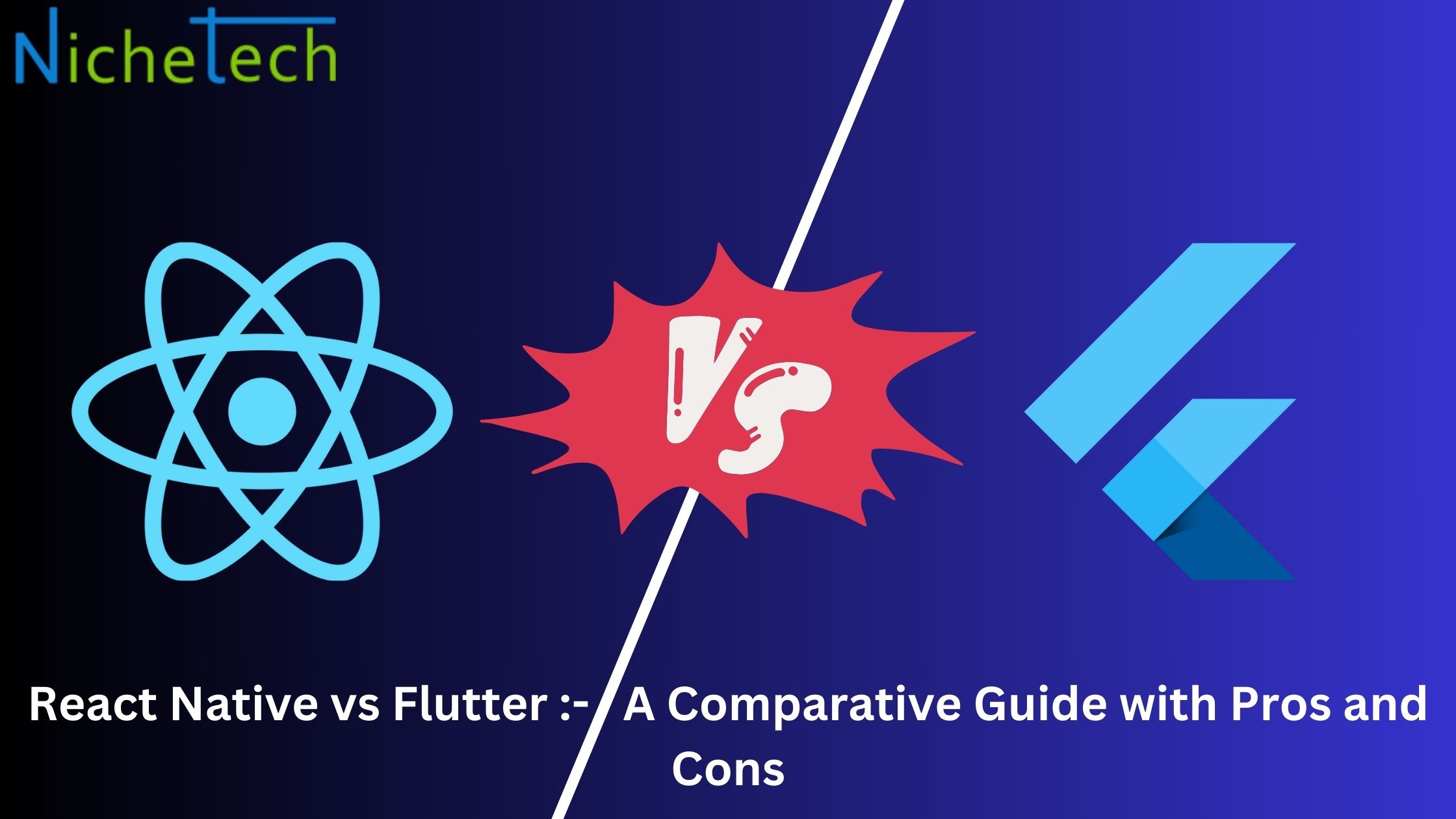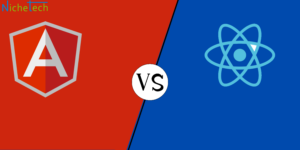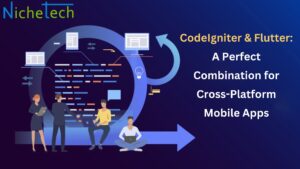In the world of cross-platform mobile app development, React Native and Flutter have emerged as leading frameworks, each offering unique features and capabilities. Choosing between them involves understanding their differences, strengths, and potential trade-offs.
Here’s a detailed comparison in 10 points highlighting the pros and cons of React Native and Flutter:
1. Programming Language
React Native: Uses JavaScript and React, a widely adopted language and framework combination among web developers. It allows leveraging existing web development skills for mobile app development.
– Pros: Easy adoption for web developers, large talent pool, and extensive community support.
– Cons: JavaScript’s dynamic typing can lead to runtime errors, and debugging can be challenging.
Flutter: Utilizes Dart, a modern, object-oriented language developed by Google. Dart offers a more structured approach with strong typing and Ahead-of-Time (AOT) compilation.
– Pros: Improved performance due to AOT compilation, reduced runtime errors, and better tooling support.
– Cons: Requires learning Dart, which may have a steeper learning curve for developers not familiar with the language.
2. Architecture
React Native: Follows a bridge architecture where JavaScript code interacts with native components via a bridge. This can sometimes lead to performance overhead.
– Pros: Access to native modules and libraries, facilitating integration with device features.
– Cons: Bridge communication can impact performance, especially in complex applications.
Flutter: Employs a layered architecture where everything, including UI components, rendering, and gesture handling, is controlled by Flutter’s framework.
– Pros: Predictable performance with direct compilation to native ARM code, resulting in smooth animations and fast UI rendering.
– Cons: Limited access to some native features may require platform-specific plugins.
3. UI Components and Design
React Native: Uses native components provided by platform SDKs (UIKit for iOS and Android UI for Android), resulting in a more native look and feel.
– Pros: Native UI rendering ensures platform-specific design guidelines are followed, enhancing user experience.
– Cons: Differences in platform components may require additional customization for consistent UI across platforms.
Flutter: Offers a rich set of customizable widgets that follow Material Design (for Android) and Cupertino (for iOS) guidelines. Widgets are rendered consistently across platforms.
– Pros: Pixel-perfect UI design, customizable widgets, and consistent behavior across platforms.
– Cons: UI may not match exactly with native components, potentially affecting user familiarity.
4. Performance
React Native: Provides good performance for most applications, with JavaScript running on a separate thread and native code handling UI components.
– Pros: Fast development cycle, hot reloading, and acceptable performance for most use cases.
– Cons: Bridge communication can introduce performance bottlenecks in complex applications.
Flutter: Offers high performance by compiling Dart code directly to native ARM code, eliminating the need for a JavaScript bridge.
– Pros: Smooth animations, fast UI rendering, and consistent performance across platforms.
– Cons: Larger app size due to bundled Dart runtime, potentially longer build times.
5. Tooling and Development Experience
React Native: Provides a robust ecosystem with tools like Expo for rapid prototyping, debugging tools, and community-driven libraries.
– Pros: Mature ecosystem, strong community support, and integration with third-party services.
– Cons: Dependency on third-party libraries for certain functionalities, occasional issues with native modules compatibility.
Flutter: Offers comprehensive tooling with Flutter CLI, Flutter Inspector for debugging, and integrated widget catalog for UI design.
– Pros: Integrated development experience, hot reload for instant code changes, and rich set of built-in widgets.
– Cons: Limited availability of third-party libraries compared to React Native, though the community is growing.
6. Community and Support
React Native: Backed by a large and active community of developers, continuous improvement through community-driven contributions and third-party plugins.
– Pros: Extensive documentation, frequent updates, and solutions to common problems readily available.
– Cons: Varying quality of third-party plugins, occasional issues with compatibility and support for newer platform features.
Flutter: Supported by Google, with a growing community contributing to libraries and resources. Google’s backing ensures long-term support and frequent updates.
– Pros: Stable API, reliable support, and integration with other Google technologies (Firebase, Google Cloud).
– Cons: Smaller community compared to React Native, fewer third-party libraries and plugins available.
7. Platform-Specific Features and APIs
React Native: Provides access to platform-specific APIs and native modules through third-party plugins and native code integration.
– Pros: Flexibility to use native capabilities, access to device features like GPS, camera, and sensors.
– Cons: Requires writing platform-specific code for complex integrations, potentially increasing development effort.
Flutter: Offers a unified API to access platform-specific features through plugins and native code integration, reducing the need for platform-specific development.
– Pros: Consistent access to platform features, reduced code duplication across platforms.
– Cons: Limited access to niche or less commonly used native APIs compared to React Native.
8. Deployment and App Size
React Native: Generates smaller app sizes compared to Flutter due to JavaScript code running on the platform’s runtime.
– Pros: Smaller initial app size, faster download and startup times for users.
– Cons: Larger app size with additional native modules, potential overhead from JavaScript bridge.
Flutter: Requires bundling the Dart runtime with the app, resulting in a larger initial app size.
– Pros: Optimized performance due to AOT compilation, reduced runtime overhead.
– Cons: Larger app size, longer build times, and potential issues with app size limits on app stores.
9. Learning Curve
React Native: Relatively easier for JavaScript developers familiar with React to adopt, leveraging existing web development skills.
– Pros: Lower initial learning curve, easier transition for web developers.
– Cons: Understanding platform-specific nuances and performance optimization may require additional effort. Flutter: Has a steeper learning curve due to Dart’s learning curve and Flutter’s comprehensive framework approach.
– Pros: Structured approach to development, strong typing with Dart, consistent API design.
– Cons: Requires learning Dart, potential initial challenges in understanding Flutter’s architecture and widget lifecycle.
10. Popularity and Adoption
React Native: Widely adopted by businesses and developers for cross-platform app development, particularly in startups and companies looking to leverage existing web development skills.
– Pros: Large talent pool, established use cases in production apps, and continuous improvement through community contributions.
– Cons: Issues with bridge performance in complex apps, dependency on third-party libraries for native functionalities.
Flutter: Gaining popularity rapidly, especially among developers aiming for high-performance applications with a native-like experience across platforms.
– Pros: Growing ecosystem, strong backing by Google, and adoption in apps requiring custom UI and animations.
– Cons: Smaller community compared to React Native, limited third-party libraries, and plugins.
Conclusion
Choosing between React Native and Flutter hinges on factors such as project requirements, team expertise, performance needs, and development goals. React Native appeals to JavaScript developers and projects needing rapid development and access to native capabilities, while Flutter excels in performance-sensitive applications with its strong UI capabilities and efficient rendering. Both frameworks offer robust solutions for cross-platform mobile app development, and the decision ultimately depends on weighing the specific strengths and trade-offs that align with your project’s needs.







